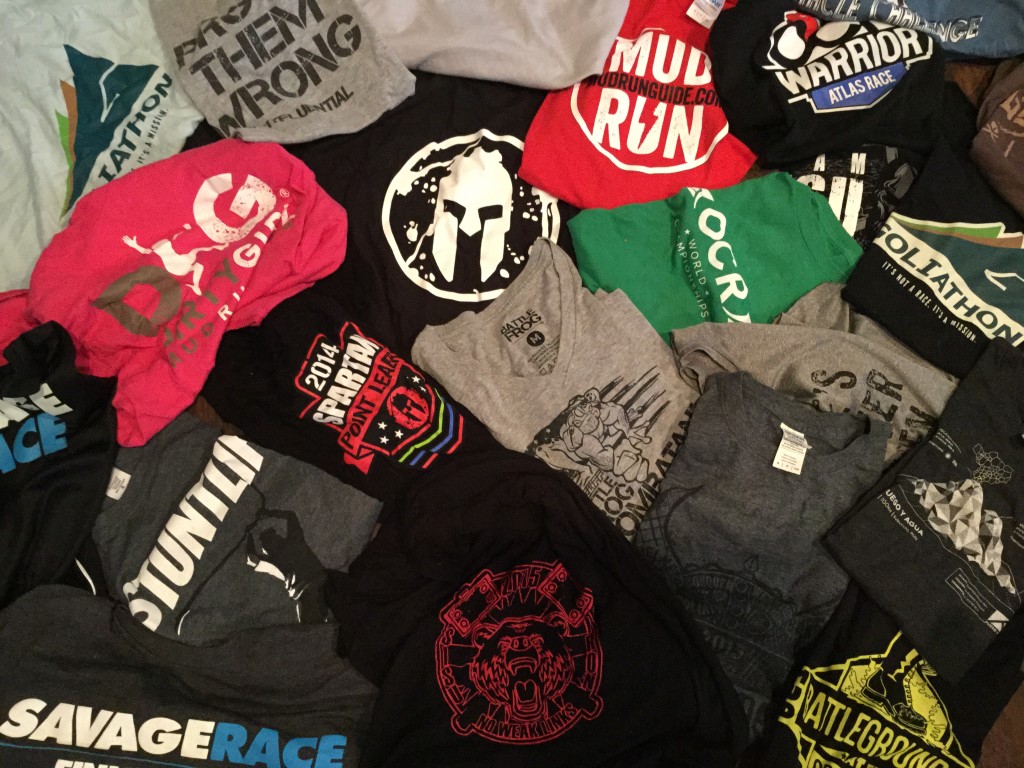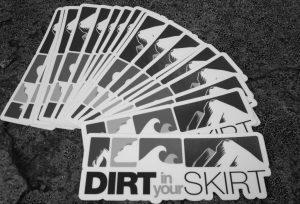Opting Out: Race T-Shirts

One thing we all love about obstacle racing is the swag. Many of us are self proclaimed gear and bling whores. It’s all fun and we love our stuff. For those who have been racing for years, the stuff quickly piles up and ends up overtaking your dresser. So the question begins, how many shirts do you really need with only 7 days in a week?
No, seriously in a week how many t-shirts do you wear?
Now open you drawers and see how many are in there. How many extras do you have sitting there?
When was the last time you wore the ones in the back of the drawer.
If you are like me you have 10 or 15 maybe even more shirts you never or almost never wear. Mostly race shirts. Have you ever stopped to wonder where those race shirts came from, not the race but who actually stitched together that fabric. If you are like me you generally don’t think about it. At least I didn’t give it much thought until last night. We sat down to watch our nightly Netflix and decided on The True Cost documentary.
As I watched the documentary I started to think about all the pieces of clothing in my closet. All the extra clothing and most importantly all the extra t-shirts I had sitting around filling drawers and I got inspired to share on this forum.
Who made that shirt?
What resources were used in the process?
How many hands touched it before it reached me?
Was it ethically made?
Were the workers paid a fair wage?
How did the making of the shirt impact the environment?
As I watched I saw much of what I already knew but also gleamed new information especially about donated clothing. I have often looked at the country of origin of my clothing but with not much more than a fleeting glance. Made in USA, you give yourself a pat on the back. Made anywhere else, do you ever think about it more than a hmm moment. I didn’t give it much thought until last night. Now today I am looking at everything I wear label by label. If you are interested watch the documentary if not, no worries I won’t be offended.
 One of the main ideas I came away with after watching the documentary was the option to opt out. Have you run 10 Spartan Races this year, maybe opt out of another Spartan t-shirt, same with Warrior Dash or Tough Mudder. How many shirts from the same organization do you need? Each answer is personal so I won’t judge you on your answer, but think about it deeply.
One of the main ideas I came away with after watching the documentary was the option to opt out. Have you run 10 Spartan Races this year, maybe opt out of another Spartan t-shirt, same with Warrior Dash or Tough Mudder. How many shirts from the same organization do you need? Each answer is personal so I won’t judge you on your answer, but think about it deeply.
But maybe you say, I donate away all my extra shirts. That is great but after watching the documentary not all we give away gets given to those in our community like we think. The BBC did an article in February looking at where our old clothing goes. I wonder if a Tough Mudder or Spartan Race shirt is floating around Ghana or Haiti?
Maybe you have no opinion on the matter but knowing where your clothing comes from and where it goes when your racing obsession has worn off and you no longer want a closet full of race shirts is important.
SO WHAT CAN BE DONE?
Well first we can take the shirts we currently have and repurpose the ones we don’t wear or use. Old shirts with holes can be cut up and used as rags, like my mom did growing up. Turn you shirts in blankets and pillows or other tips in this article. Give your old shirts to your kids, nieces or nephews for sleeping. Keep the donation circle close to you.
Opt Out
If you have too many shirts to begin with consider opting out of taking that shirt at registration or after the race. Leave the race with your memories and maybe a few photos. If they give out a medal have that as a keepsake. Keep one more shirt out of the consumer stream.
If you love your shirts and want them, demand more from the companies we race at. See where the shirts come from and demand shirts from the USA or from fair trade garment factories. Yes, the garment industry has a very small fair trade sector. Demand to know the resources that went into the shirt, are they organic cotton, BT Cotton or something else.
It’s time for all of us to think about not only what we eat, and how we live but also what we wear and the true costs behind all the goods in our life. When we start to think and ask questions we open ourselves up to greater understanding.









